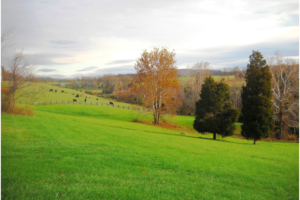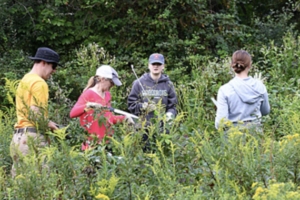Proposed MOD specific Environmental Criteria
The current draft of the Loudoun County zoning ordinance (January 2023) establishes setback (Section 5.04.D) and performance standards (Sections 5.04.E and 5.04.F) for development in the Mountain Overlay District (MOD). Friends of the Blue Ridge Mountains and other environmental and conservation organization contend that while these setback and performance standards are helpful, they do not provide adequate protections for the thin soils, steep slopes and extensive tree cover that are characteristic of the mountain environment.
Friends suggests that proposals to build in the MOD must be evaluated on the basis of a number of environmental criteria specific to the unique nature of the mountains. Friends proposes that the zoning ordinance should explicitly contain the following thirteen (13) criteria for evaluating MOD projects.
| CATEGORIES
| FBRM COMMENTS |
| Preserve natural ridgeline features | The maintenance of a closed forest canopy for the highest 100 vertical feet along any ridgeline or crest, with no development projecting above the canopy, should be required without exception.
|
| Retain forest canopy | All development proposals should maintain the forest canopy in as closed a condition as is practicable, thus precluding clear cutting forestry projects, concentrated parking lots, etc.
|
| Minimize CO2 emissions | There are two primary ways in which development in the MOD will increase CO2 levels. Building in the MOD will almost invariably result in the loss of tree canopy. Healthy trees significantly reduce CO2. According to the Arbor Day Foundation a mature tree can sequester approximately 48 pounds of CO2 per year while releasing approximately 260 pounds of oxygen a year.
Secondly any new development will increase traffic and cars are a major source of CO2. Federal EPA estimates that the average passenger vehicle releases 0.89 pounds of CO2 per mile.
|
| Control erosion | The water courses found in mountainous regions must be meticulously kept free of added sediments and other pollutants in order to maintain local benthic water quality, and meet downstream water quality standards, thus requiring the use of technologies capable of preventing run-off water from reaching any stream channel.
|
| Prevent landslides and slumps | Mountain slopes are inherently unstable geologically, requiring that very strict controls on removal of vegetative cover and disturbance of soils must be adhered to, so as to prevent development activities from creating increased landslides and slumping risks; the requirements in the draft ordinance are too weak to achieve these goals, and should be strengthened accordingly.
|
| Preserve upland stream water quantity and quality | Mountain springs and headwater water courses are a critical component of the hydrological system serving natural and human water needs, yet these features are highly sensitive to nearby and upslope developments, especially those developments involving vegetation removal or soil disturbance; the draft setback requirements may be insufficient to achieve the required protections.
|
| Protect ground water recharge areas | Mountainous regions are a prime source for recharging ground water aquifers that supply much of our developed water supply, thus making it imperative that these recharge areas be identified and protected from any development that would diminish their recharge capacity.
|
| Minimize impervious surfaces, and require mitigation | Impervious surfaces such as rooftops and asphalted roads can be highly disruptive to the natural hydrological flow, so to the extent feasible their use must be limited in mountainous regions, and their runoff strictly regulated so as not to impact the functioning of natural water courses or to create sheet flow runoff.
|
| Retain rural unpaved roads as per current Loudoun County policy | Loudoun’s unpaved rural roads are a part of its historical patrimony and are generally more environmentally compatible than paved replacements would be, thus making their retention desirable.
|
| Protect wildlife habitat and migration corridors | Mountainous regions are rich in wildlife habitats and are a primary location of wildlife migration corridors; as such these environmental assets are sensitive to development, so MOD development restrictions should protect wildlife habitats and migration corridors.
|
| Protect air quality and visibility | Air pollution emissions from elevated terrain is more visible from distant vantage points and is more prone to travel greater distances to impact other areas; additionally, mountain ecosystems are more sensitive to polluted air resulting in potential decline of critical vegetative cover.
|
| Preserve dark skies | Light pollution from ill designed lighting systems results in unnecessary visible loss of nighttime sky features and can be avoided by use of purposefully designed lighting elements.
|
| Avoid intrusive encroachments on the Appalachian Trail corridor and prime viewsheds | The Appalachian Trail (AT) is an important historical, cultural, and economic resource for Loudoun County, so measures are warranted to avoid development encroachments on the AT and its corridor and prime viewsheds that would be detrimental to its premier trail status.
|




Leave a Reply
Your email is safe with us.